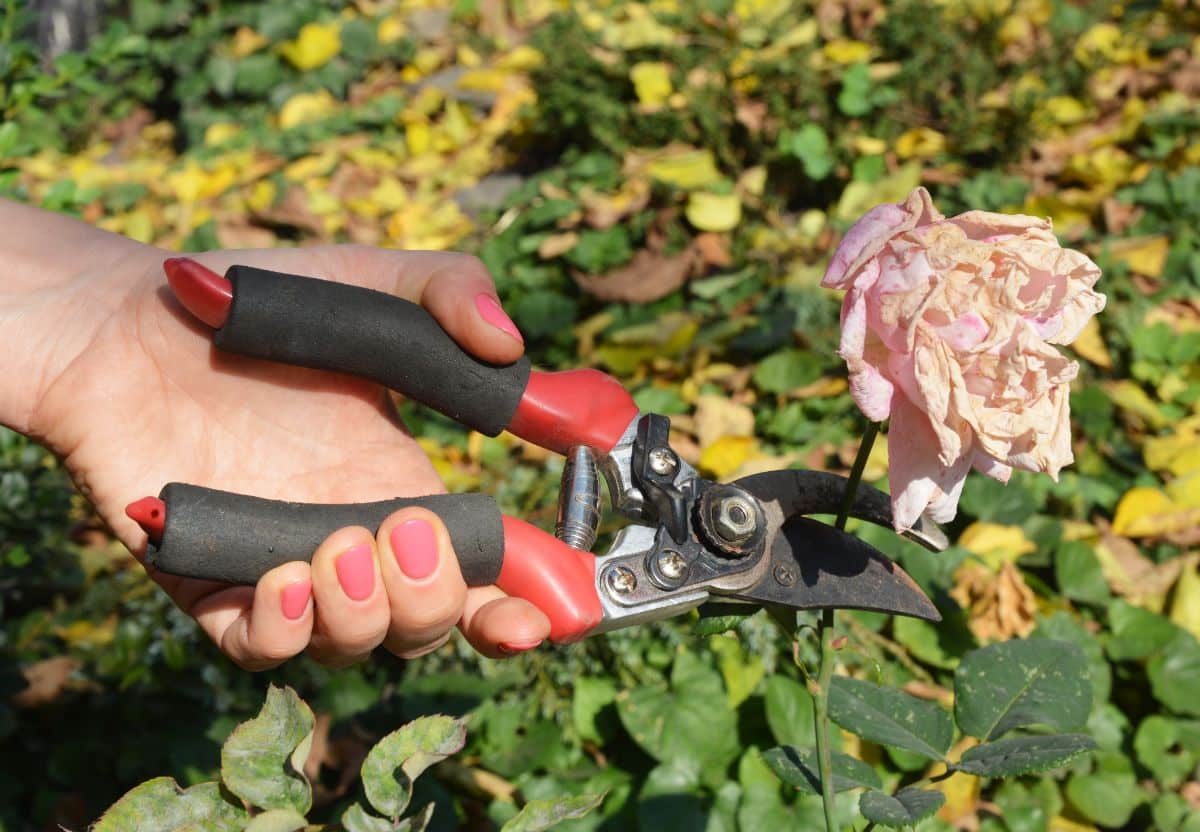
Daylilies, roses, and petunias all benefit from deadheading, which improves the look of plants and encourages them to bloom more abundantly. But if you’re new to gardening, you may not know when and how to deadhead to make your plants more productive. Well, we’re here to help, and the top 10 deadheading tips in the list below will have you deadheading ornamentals and cutting flowers like a pro in no time!
Jump to:
- Why should you deadhead plants?
- 9 tips for deadheading flowers
- 1. Research individual plant varieties first.
- 2. Use the right tools.
- 3. Remember to sterilize.
- 4. Know when to deadhead.
- 5. Know when not to deadhead.
- 6. Make cuts at the right spot.
- 7. Work in stages.
- 8. Be consistent.
- 9. Compost old flowers.
- Frequently asked questions
- Summary
Why should you deadhead plants?
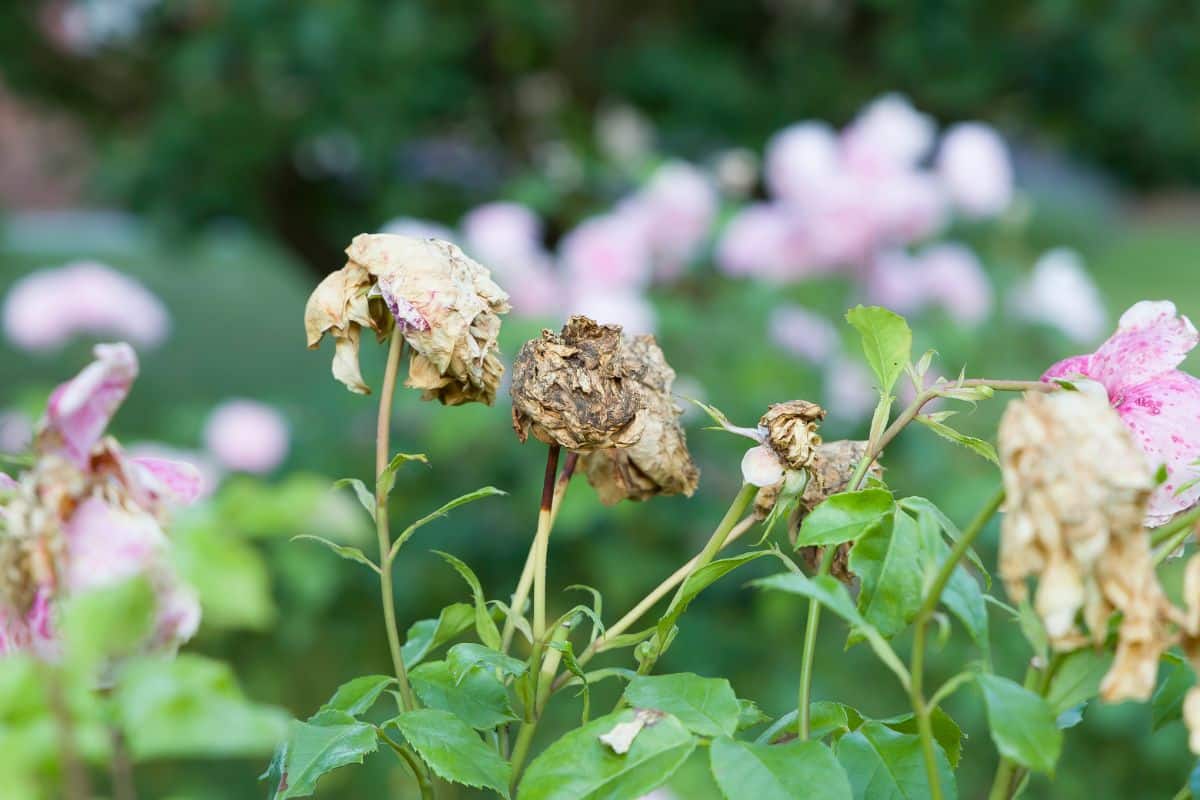
Deadheading means removing the old, spent flowers from ornamental plants, and it’s a regular part of gardening maintenance. Deadheading old flowers improves the look of your plant and is a great way to tidy up your garden. But beyond that, deadheading also benefits the health of your plant and helps many ornamentals produce more flowers for cut flower bouquets and garden enjoyment.
After flowering, most plants direct their energy toward developing seeds. But while this is useful for plant production, it limits repeat flowering as the plant is busily producing seedheads. However, by deadheading old blooms, you force the plant to stop producing seeds, and the plant will often respond to this by making more flowers!
In short, if you want a fresher-looking garden and repeat blooms throughout the summer months, deadheading plants at least once a week is a good way to do just that!
9 tips for deadheading flowers

Deadheading flowers isn’t difficult, but you’ll get better results if you time your deadheading correctly. Knowing how to cut flowers is also important, as cutting too high or too low on plant stems can inhibit flower development and divert your plant’s energy away from blooming. But no matter if you keep perennial or annual flowers, the simple gardening tips below will take all guesswork out of deadheading.
1. Research individual plant varieties first.
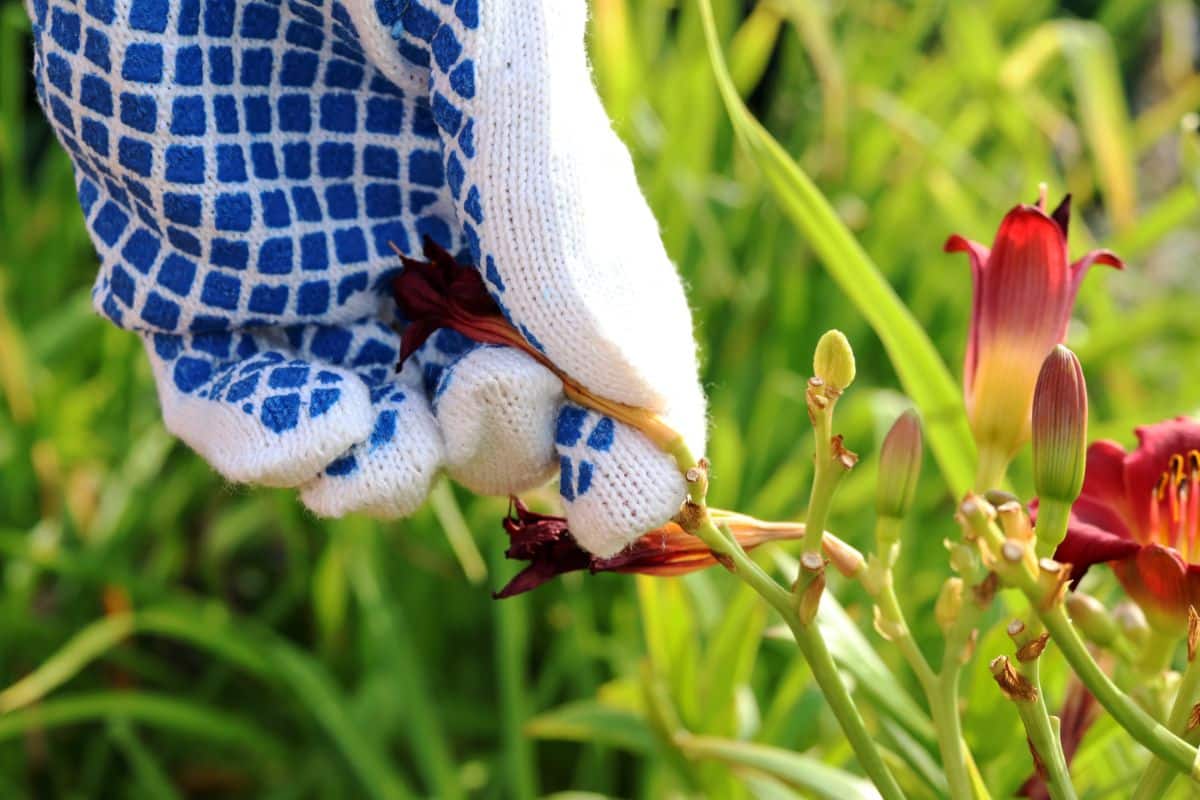
Not all plants need to be deadheaded, and some plants need to be deadheaded differently than others. So before you start deadheading plants in your garden, it’s important to research the particular types of plants you’re growing to make sure you’re handling them correctly.
For instance, plants like black-eyed Susan naturally self-sow after flowering, and deadheading them too early in the season can limit their ability to seed themselves. Other plants, like sedum, retain their striking flowerheads throughout the winter months, adding winter interest and structure to beds when nothing else is in bloom. And plants like foxglove and hollyhocks shouldn’t be deadheaded at all during the growing season, as they need to reseed themselves to produce more flowers.
2. Use the right tools.
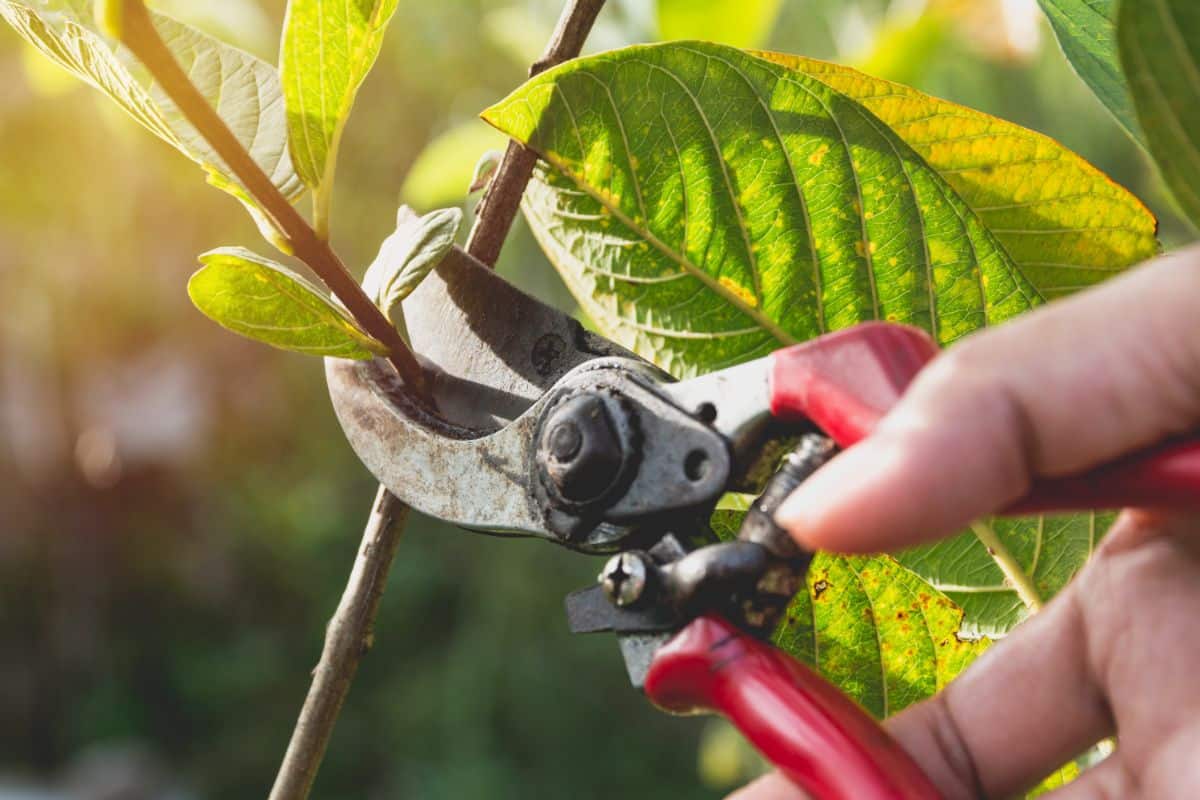
Plants with tender, fleshy stems, such as petunias, can be deadheaded with just your fingers, but woody-stemmed perennials and other ornamentals usually need to be deadheaded with pruners. Both hand pruners and gardening clippers will work, but make sure your tools are nice and sharp before you begin.
If your pruners have been sitting for a while and they’re showing signs of rust, clean them up with a bit of distilled white vinegar and sharpen their blades before you start deadheading.
3. Remember to sterilize.
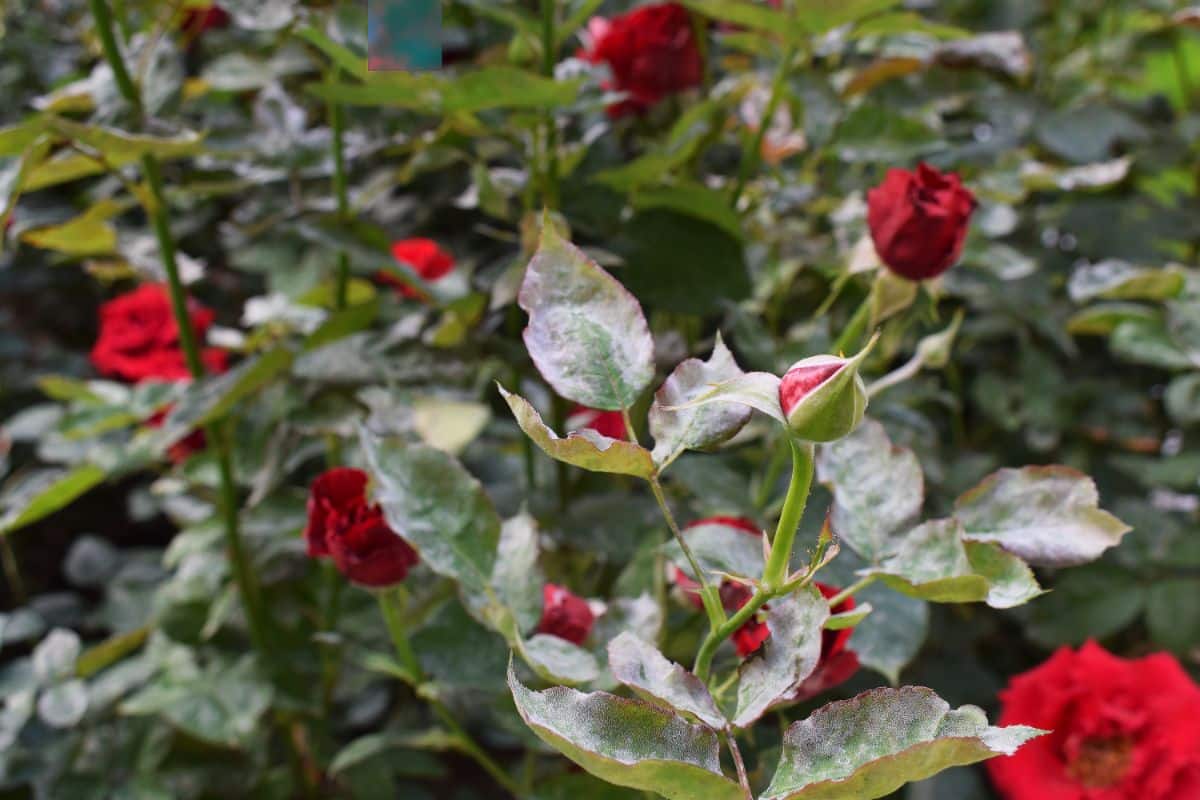
Because plant diseases, like powdery mildew, can be readily spread from plant to plant when pruning or deadheading, it’s important to always sterilize your pruners in between plants.
Some gardeners soak their tools in a 10% bleach solution to sterilize them. However, this method is not the most handy as tools generally need to be soaked for 10 to 30 minutes for sterilization. A quicker option is to dip or wipe down tools with rubbing alcohol in plants, which sterilizes pruning blades in 10 to 30 seconds.
4. Know when to deadhead.
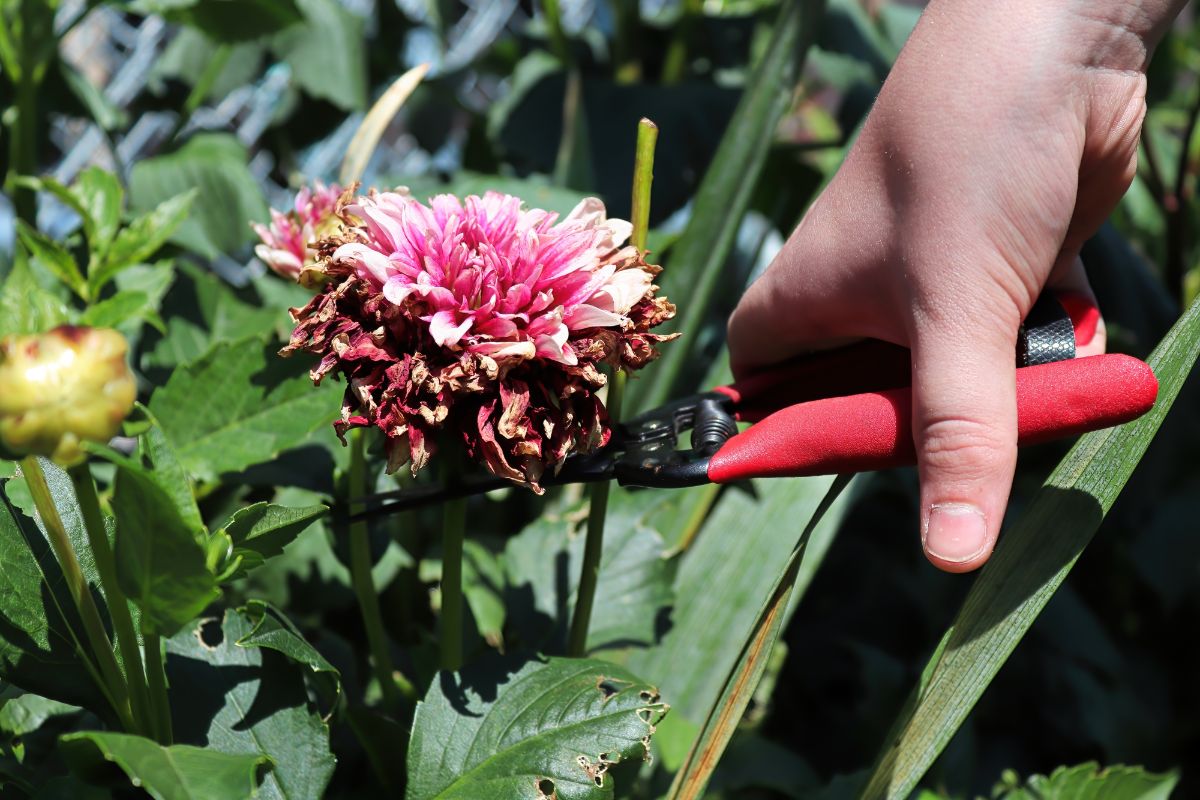
Plants should be deadheaded regularly throughout the growing season by nipping away spent and bedraggled blooms when they start to fade. Flowers that have been damaged by rain or pests can also be deadheaded, which can help your plant look healthier and channel the plant’s energy toward producing more blooms.
How often your plants will need to be deadheaded will depend on the types of plants you’re keeping and the growing conditions they’re subjected to. Harsh winds, heavy rains, unseasonable frosts, diseases, and pests can all make flowers fade more quickly, although flowers will naturally fade over time too. Torn or holey petals, bleached flower colors, withering, and wilting are all signs it’s time to start deadheading!
5. Know when not to deadhead.
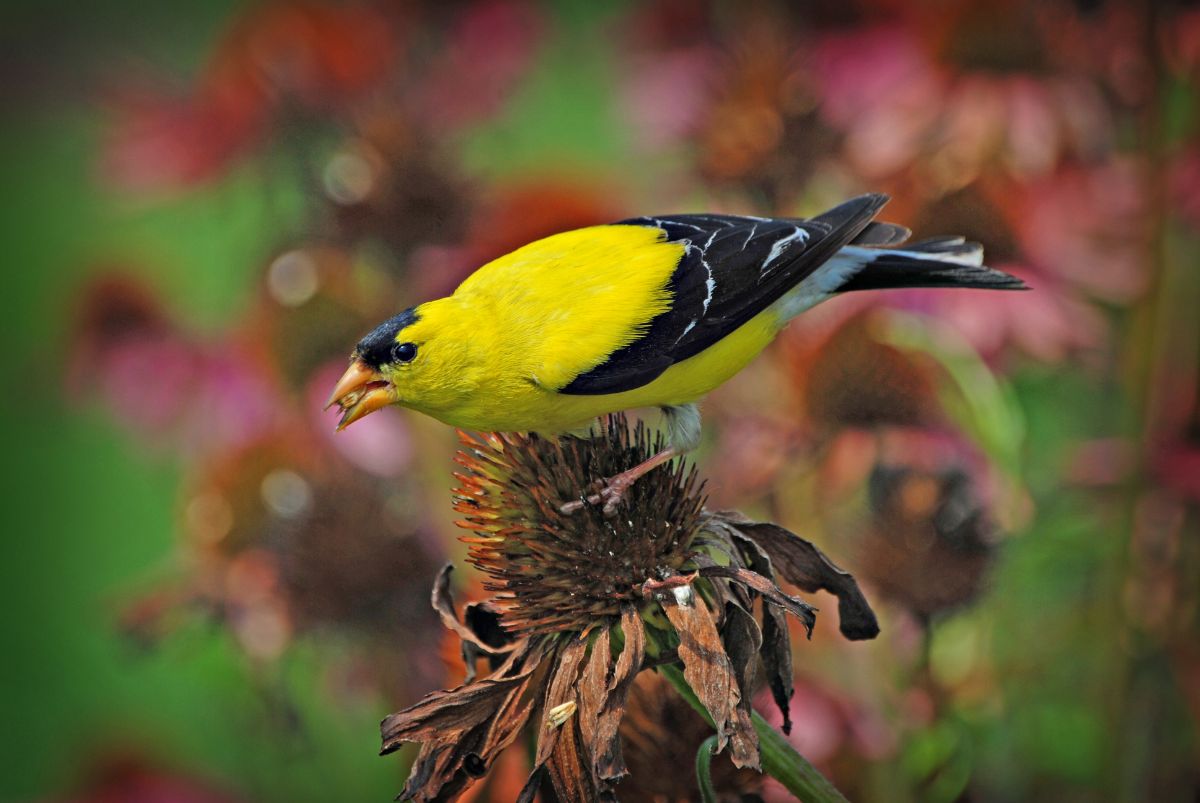
Different flower species can be deadheaded throughout the growing season, but it’s best to stop deadheading certain plants in autumn. While you can certainly still deadhead the blooms in your autumn container gardens, ornamental flowers in your landscape usually start producing seed heads towards the end of the season that you may not want to remove. Allowing plants to go to seed in fall encourages self-sowing, but it also leaves protein-rich seeds in place to feed birds and other wildlife throughout the winter months.
Another reason why you may not want to deadhead ornamentals in autumn is berry production. Not all plants produce attractive berries, but certain varieties of irises and other flowering plants do, and it would be a shame to remove their lively colors from your garden beds with overly vigorous deadheading.
Finally, it’s best to avoid deadheading when your plants are already stressed. Plants that are struggling through heat waves or drought don’t have as much energy to bounce back after deadheading, and removing their blooms may slow their growth. Nutrient deficiencies and pest infestations may also cause plant stress, so it’s best to tackle plant stressors before resuming deadheading.
6. Make cuts at the right spot.
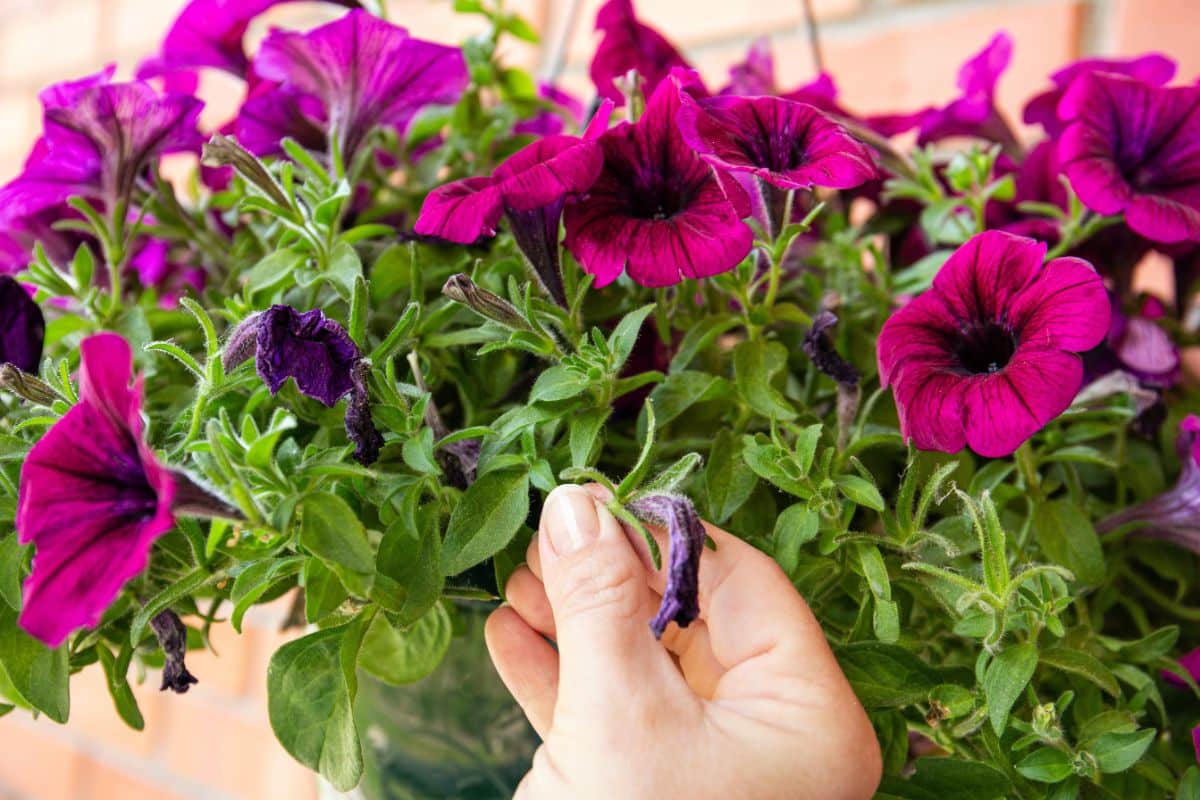
When you’re ready to start pruning, sharpen up your gardening shears and get to work. But first, take a careful look at your plants to pinpoint exactly where you need to make your cuts or pinch away spent blooms.
Some gardeners simply pull off dead flowers when deadheading, but this isn’t as effective at getting plants to rebloom. Instead, deadhead flowers by pinching or cutting the stem below the old flower and immediately above the first set of healthy leaves. Of course, if your plant has both new buds and old withered flowers on the same stem, be less aggressive with your pruning and simply pinch away the old, dead flower.
Depending on your preferences and the type of plants you’re growing, you may want to cut the plant’s stem lower to remove spindly branches and tighten up the lines of your garden. Just make sure you make your cuts above a healthy set of leaves, which can jumpstart new growth, branching, and flowering too.
7. Work in stages.
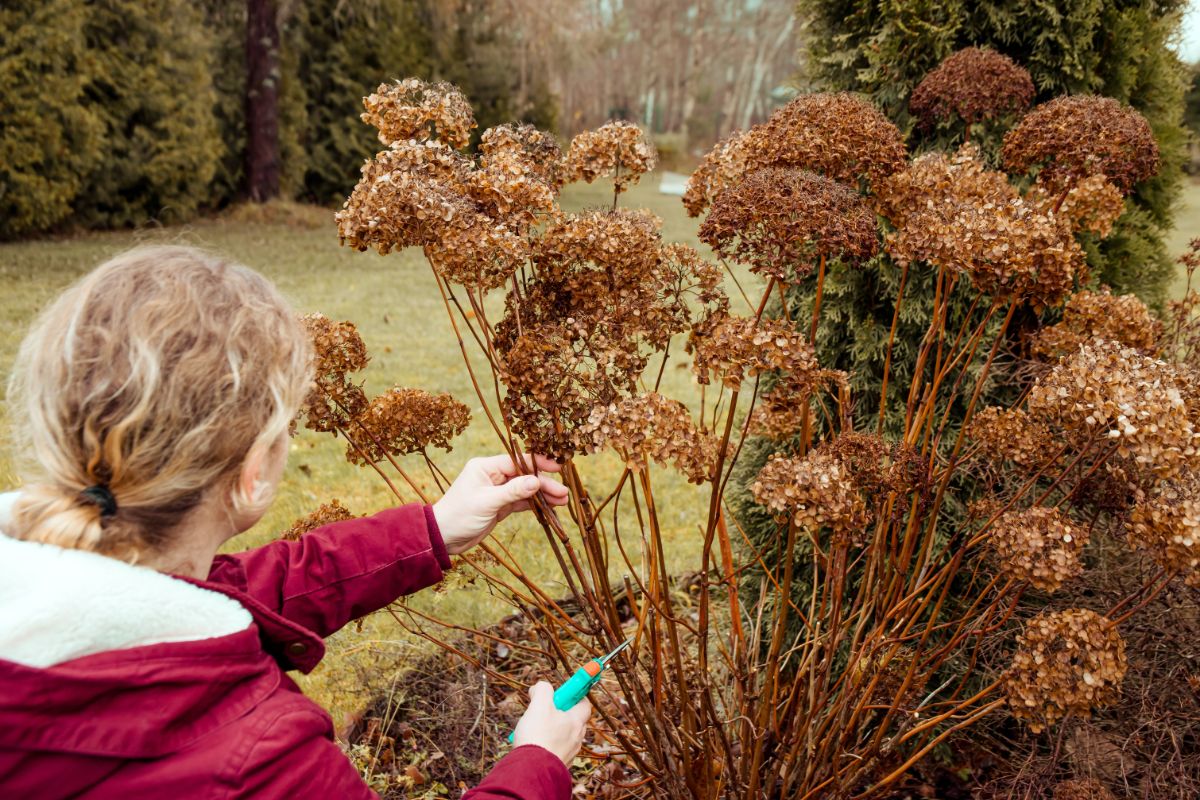
Deadheading an entire plant all at once may cause plant stress or dehydration as the plant struggles to heal the cut sections of the stem. That’s why if you’re dealing with a plant with lots of spent blooms, you may want to deadhead a few stems at a time and then give the plant some time to recover in between cuttings. This works particularly well if you just spend a few minutes several times a week deadheading flowers in your garden as needed, plus it cuts down on how much work you’ll have to do on any given day.
8. Be consistent.
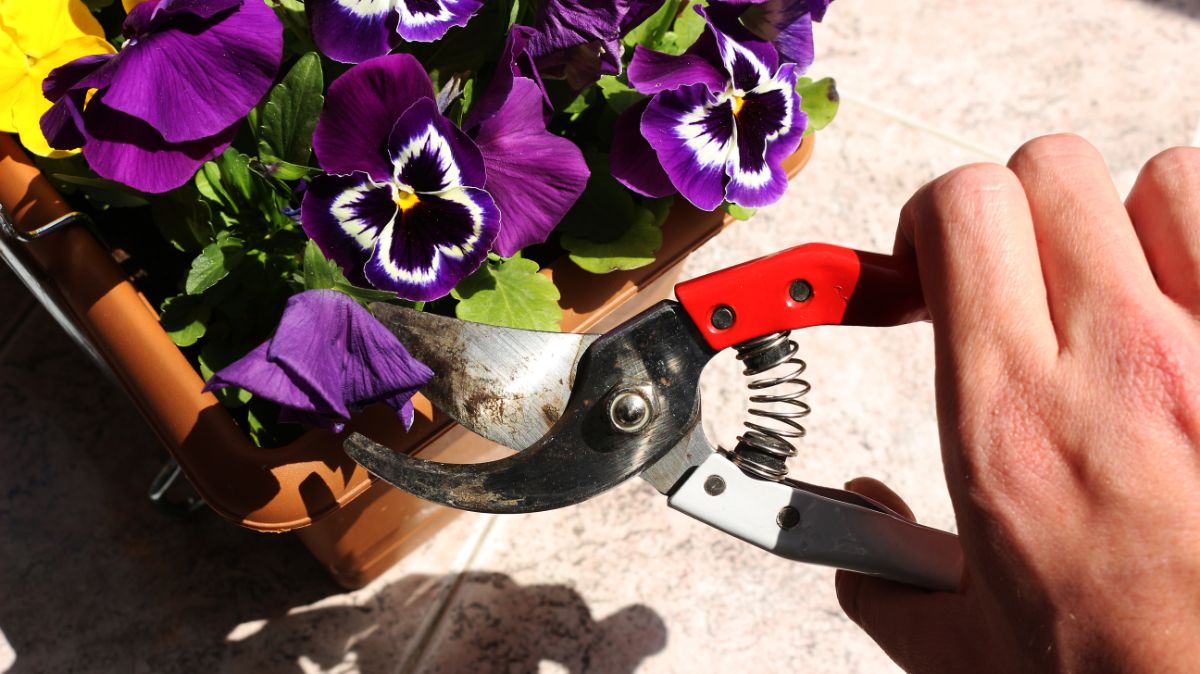
Deadheading flowers isn’t a one-time thing. To maintain the look of your plant and promote more flowering, you will need to be consistent and deadhead your plants regularly. How often you’ll need to deadhead flowers will depend on the types of plants you’re growing, but deadheading 2 to 3 times every week will usually work well for most gardeners, and it will keep your plants looking trim and tidy from spring through fall.
9. Compost old flowers.
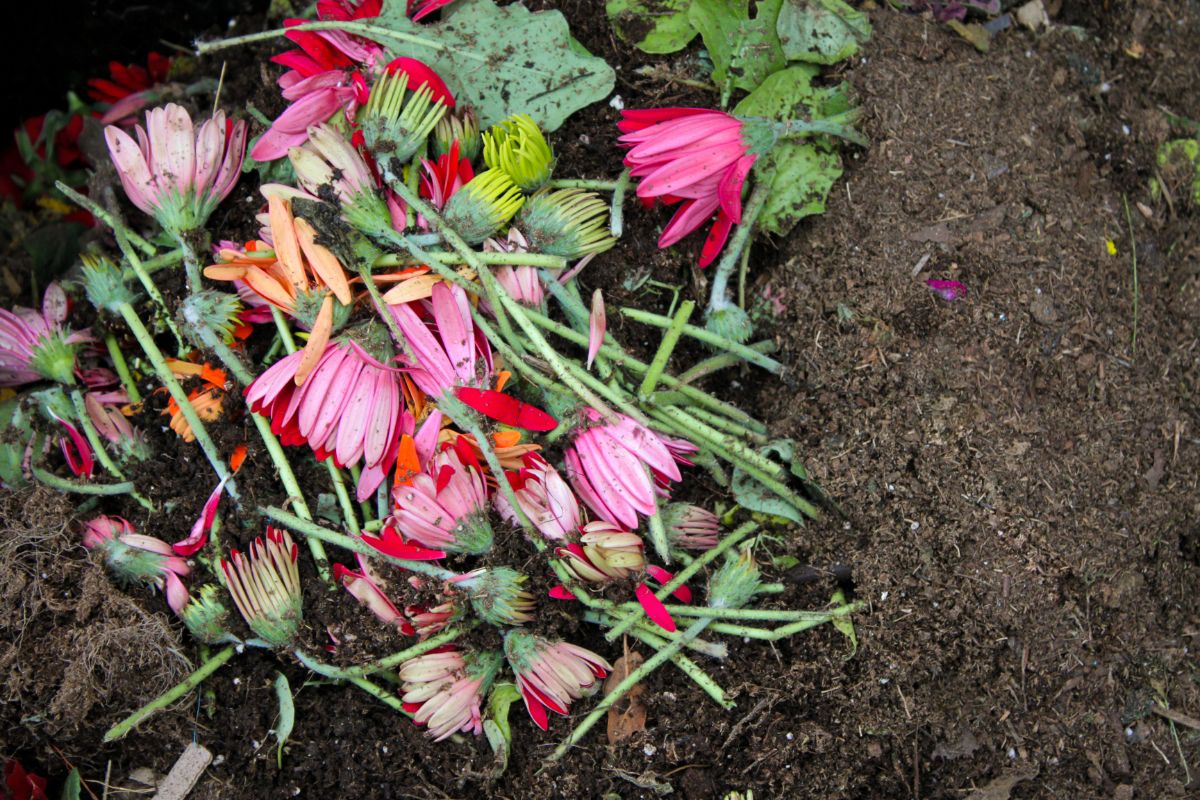
Of course, once you’ve deadheaded all your plants, don’t throw those old flowers in the trash – compost them instead! Composting is an easy way to limit garden waste, and it channels nutrients back into your soil so you can grow more flowers with them next year.
Flowers that have been deadheaded can be composted with both hot and cold composting methods. Technically, old blooms count as a “nitrogen” source, so they should be added to compost piles in conjunction with carbon-rich materials, like autumn leaves, sawdust, or dried plant matter. Almost all deadheaded flowers can be composted, but it’s best to avoid composting invasive plants or diseased plant material as seeds and pathogens can sometimes survive even hot composting methods.
Frequently asked questions
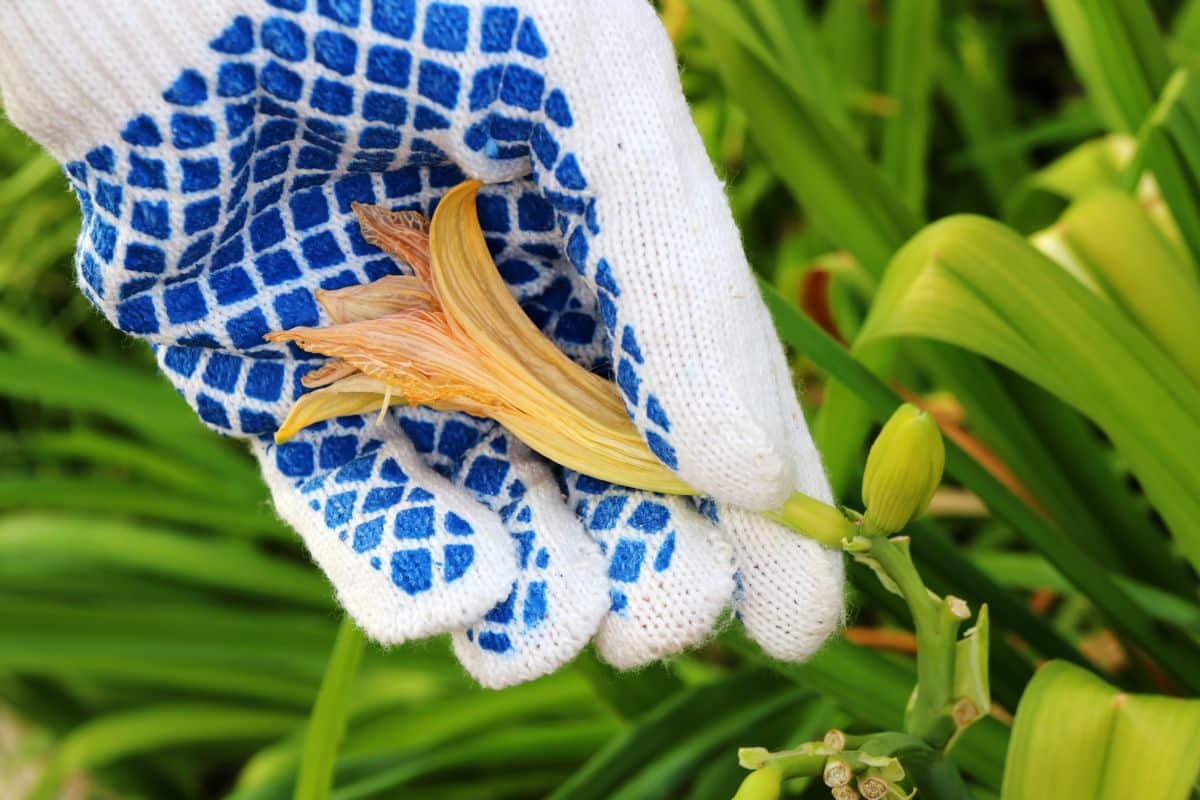
Plants that aren’t deadheaded regularly can look rather overgrown and unruly. What’s more, deadheading encourages reblooming in many species, so by not deadheading flowers, you may be limiting the number of blooms you get in your ornamental beds.
Some flowers, like cosmos, will bloom more prolifically with frequent deadheading. However, other plants like foxgloves will need to reseed themselves if you remove their entire flower stalks, which can severely limit the number of flowers you get. For this reason, it’s always important to research pruning and deadheading tips on the plants in your garden before you get started.
No, not all annuals benefit from deadheading; however, some plants that should be deadheaded regularly include cosmos, Mexican sunflowers, heliotropes, coreopsis, and zinnias.
Deadheading is less necessary towards the end of the season, and it’s a good idea to stop deadheading flowers in the fall if you want them to produce seeds. Plants like black-eyed Susan and coneflowers produce heavy seedheads that provide an important source of food for wild birds in autumn and winter. Other ornamentals, like cosmos, will readily self-sow if you don’t deadhead flowers in autumn, which is a great way to get more free plants for next year’s garden!
Yes, petunia plants benefit from deadheading, and performing this simple gardening task can keep your petunias looking fresh much longer. To deadhead petunias, pinch away old flowers directly above a set of healthy leaves. Since petunias have tender, fleshy stems, there’s no reason to use gardening pruners for deadheading.
During the growing season, marigolds will benefit from deadheading, which will remove old plant matter and keep your plants looking their best. To deadhead marigolds, simply pinch off old flowers above a set of new leaves or make a clean cut with gardening shears. Towards the end of the season, you may want to stop deadheading marigolds and allow a few flowers to go to seed and self-sow starts for next year’s garden.
Summary
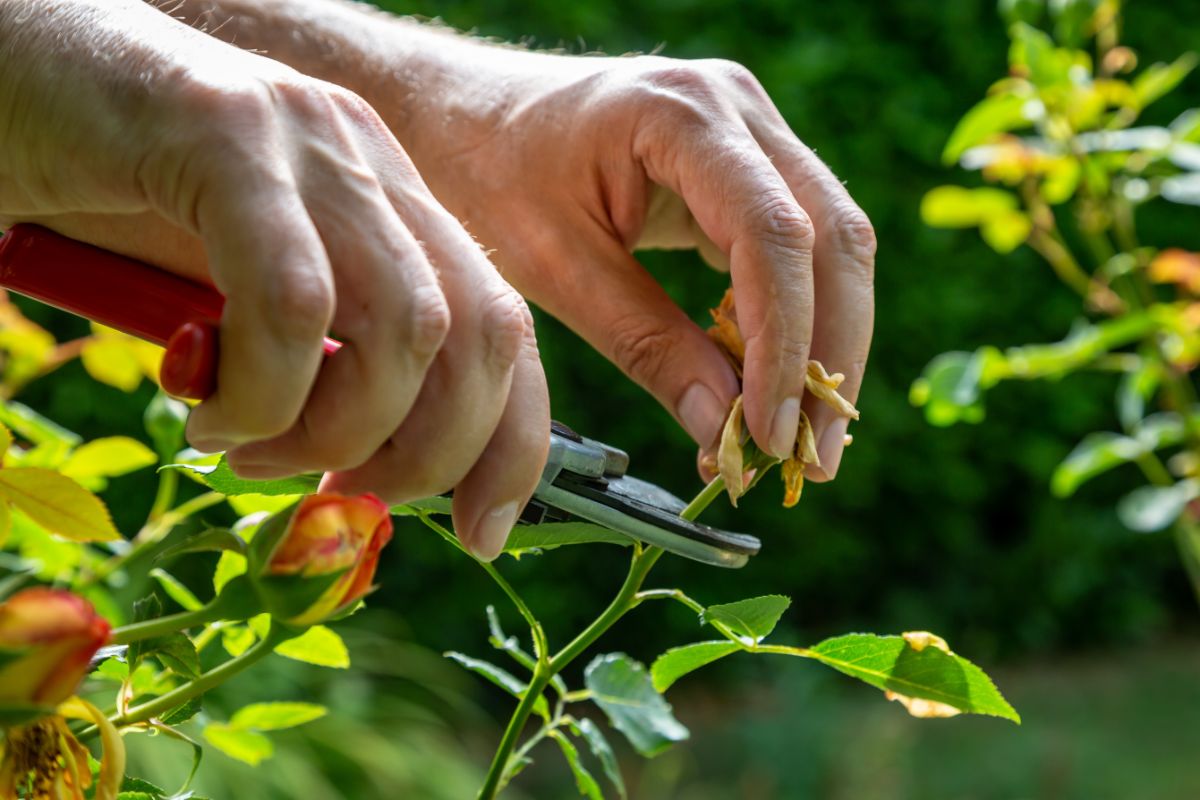
Deadheading doesn’t take a lot of time, but it can make a big impact on your flower gardens and ornamental planters. Just pinching off a few flowers while watering and weeding can freshen up your plants and produce more flowers for your enjoyment too. So give deadheading a try on your daylilies, cosmos, and petunias; you see the benefits, and your plants will thank you for it!
Deadheading plants can improve the look of your flower garden, but pruning can help too. If you’d like to learn more maintenance tips for ornamentals, check out our guide on caring for and pruning hydrangea shrubs.

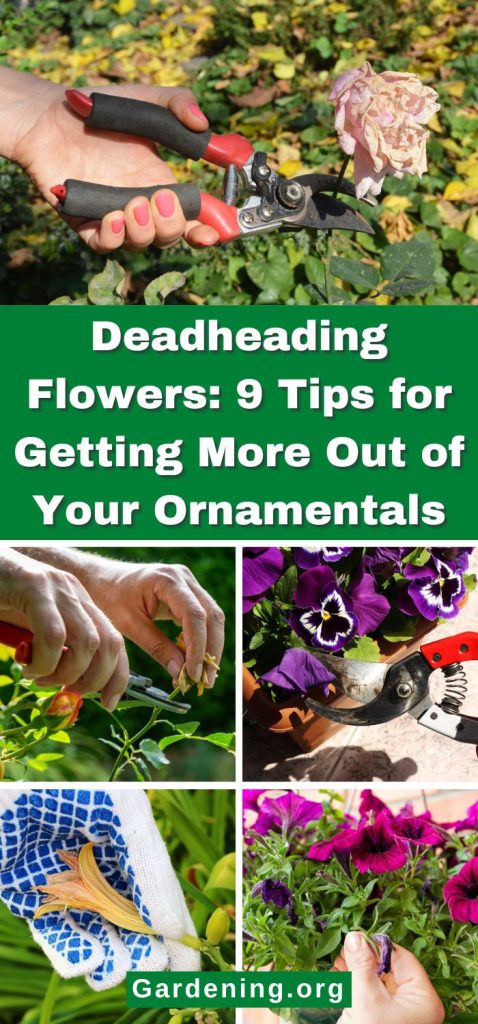
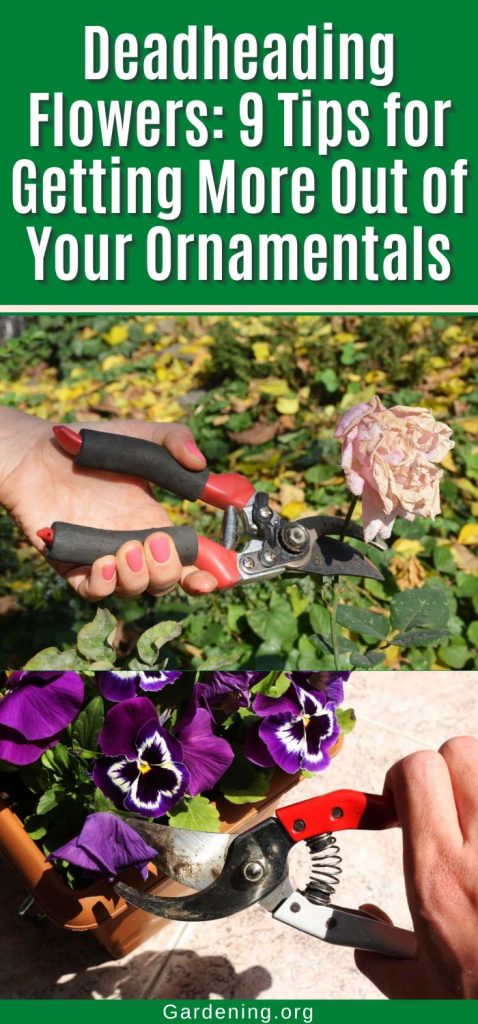
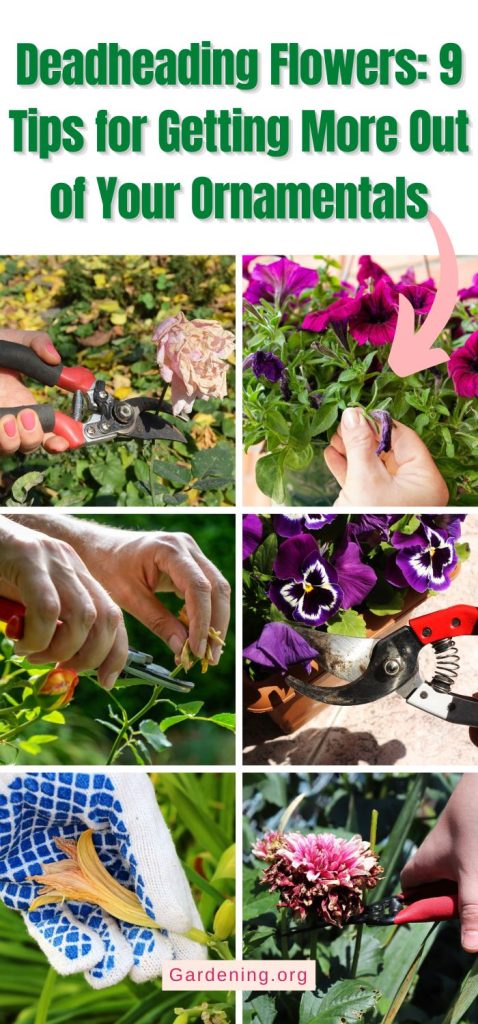
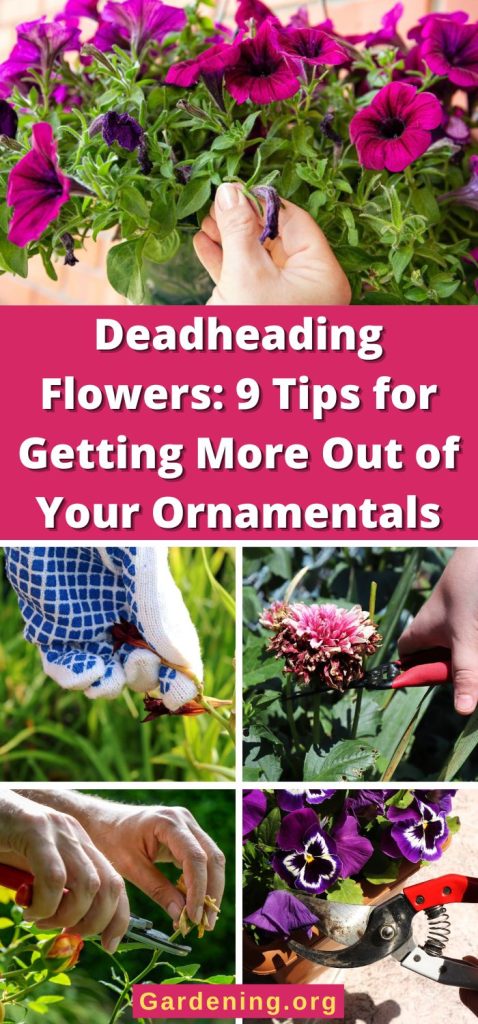

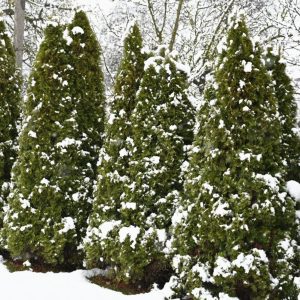


Christine
I enjoyed reading up on this column,I do most things but it was just reassuring. Thanks a lot.
Mary Ward
Always good to know you're on the right track, right?